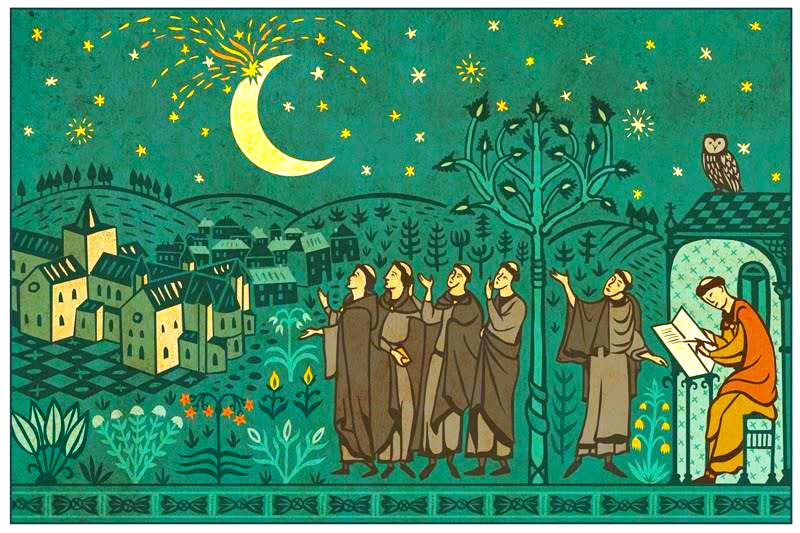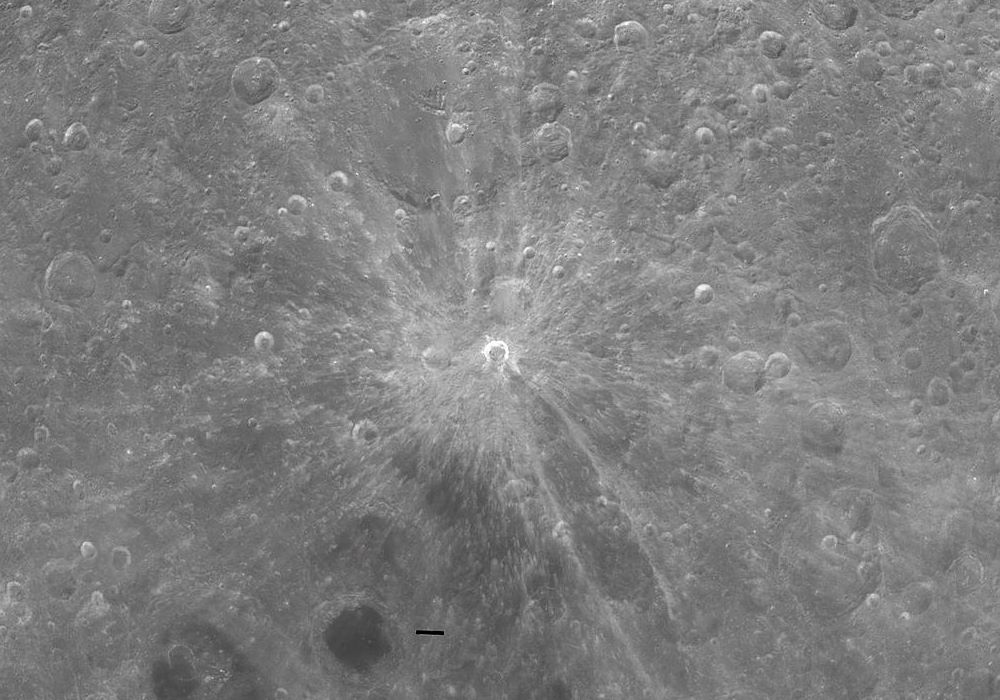In the early evening of 18 June 1178, five monks from Canterbury in southern England, reported having witnessed an unusual phenomenon in the sky. According to the monk Gervase, chronicler of the Abbey of Christ Church, the men were looking at a new crescent moon when they saw the upper part “split in two.” Gervase wrote:
From the midpoint of the division a flaming torch sprang up, spewing out, over a considerable distance, fire, hot coals and sparks. Meanwhile the body of the Moon which was below writhed, as it were in anxiety, and to put it in the words of those who reported it to me and saw it with their own eyes, the Moon throbbed like a wounded snake. Afterwards it resumed its proper state. This phenomenon was repeated a dozen times or more, the flame assuming various twisting shapes at random and then returning to normal. Then, after these transformations, the Moon from horn to horn, that is along its whole length, took on a blackish appearance.

Gervase’s narrative remained forgotten for centuries until Jack Hartung, a geophysicist at the State University of New York at Stony Brook, rediscovered it in the 1970s. Since then it has been the source of much interest among astronomers. Hartung suggested that the men witnessed a meteor or an asteroid impact on the Moon, most likely the one that created the 22-kilometer crater Giordano Bruno, since the time period of its formation corresponds to the date of the observed phenomenon.
But there are problems with this theory. For one, the Giordano Bruno crater could not have formed only 800 years ago. According to the astronomer Tomokatsu Morota, Giordano Bruno crater is between one and ten million years old. The cosmogeologist Jörg Fritz also estimated the age of the crater at more than one million years, and adds that a crater as young as 800 years old would still show signs of its youth, such as an elevated temperature from the impact, none of which was observed in the Giordano Bruno crater.
Related: The Mysterious Sky Battle Over Nuremberg in 1561
Besides, an impact of such intensity would have kicked up an amount of debris that would have triggered a blizzard of meteor storm on earth up to a week long. If the men of 1178 had witnessed the formation of the Giordano Bruno crater, they should have also witnessed an intense meteor shower the following nights. The fact that no one recorded what should have been a spectacular fireworks display in any annals of astronomy from around the world, including European, Chinese, Arabic, Japanese and Korean, indicates that the monks did not witness an asteroid impact.

Giordano Bruno crater. Photo: NASA
So what did the monks saw? Paul Withers of the University of Arizona's Lunar and Planetary Laboratory believes the men simply saw a meteorite explode in the earth’s atmosphere before the moon’s shadowed disc.
“I think they happened to be at the right place at the right time to look up in the sky and see a meteor that was directly in front of the moon, coming straight towards them,” Withers said. “And, it was a pretty spectacular meteor that burst into flames in the Earth's atmosphere - fizzling, bubbling, and spluttering. If you were in the right one-to-two kilometer patch on Earth's surface, you'd get the perfect geometry. That would explain why only five people are recorded to have seen it.”
But Withers goes further. He suggests that the men had seen nothing at all, because the moon was not yet visible from Canterbury on 18 June 1178. Perhaps the date was incorrect? Or perhaps the entire episode was made up?
Astronomy historian Peter Nockolds believes that Gervase’s story was complete fantasy.
“The supposed event took place during the time of the Crusades,” Nockolds explains. “The Moon is a well-known symbol of Islam. (The crescent Moon currently appears on the flags of certain Islamic countries.) The Qu'ran contains a reference to the splitting of the Moon (Surah 54:1). The phenomenon described by Gervase could be interpreted as portending the defeat of Islam.”
Monks had the habit of associating celestial apparitions to Christian victories in the Crusades. Gervase himself had related atmospheric phenomena of the previous year to the defeat of Islamic armies. The lunar phenomenon described for 1178 June 18 could then be a piece of propaganda, holding the prospect of the defeat of Islam if Frederick Barbarossa, the Holy Roman Emperor, would intervene. The truth will probably never be known.
References:
# The Mysterious Case of Crater Giordano Bruno, NASA Science
# Javier Yanes, The Mystery of the Moon that was Split in Two, BBVA
# Peter Nockolds, Comment on "Meteor storm evidence against the recent formation of lunar crater Giordano Bruno" by Paul Withers



Comments
Post a Comment